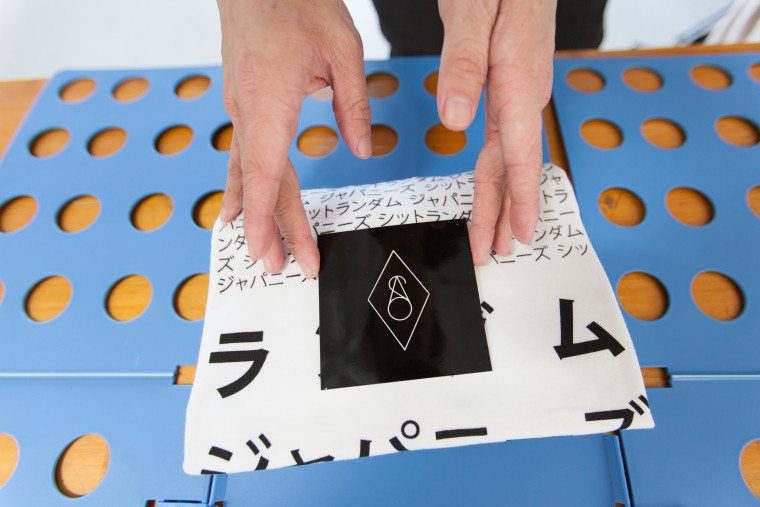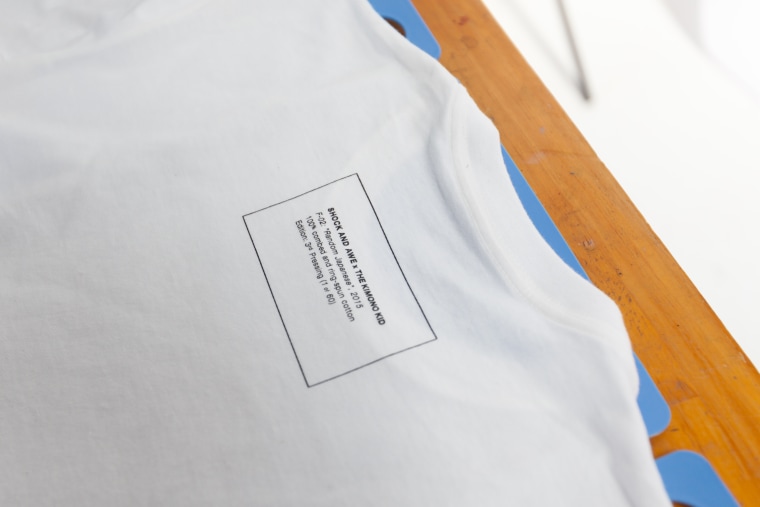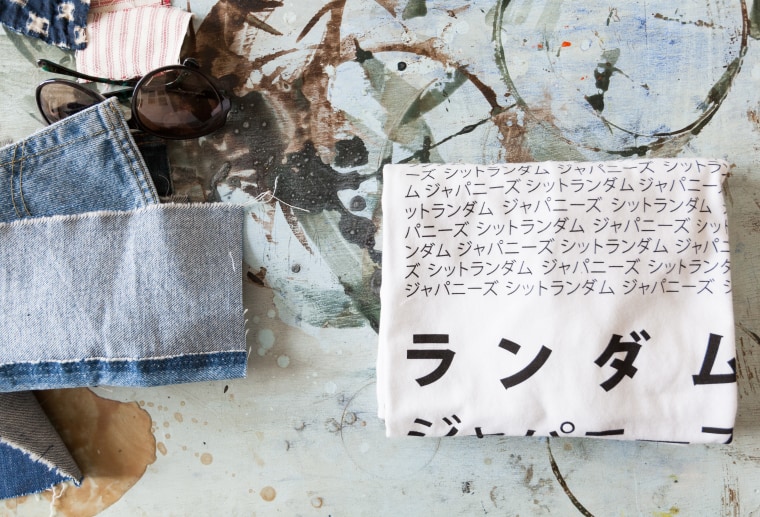In response to cultural appropriation in fashion, two New York-based artists — Kevin Wang, the 25-year-old founder of creative collective Shock and Awe, and Sasa Li, the custom apparel designer behind The Kimono Kid — are collaborating for a T-shirt project.
The two designed a shirt aimed to poke fun at popular streetwear trends, specifically the use of Japanese culture in design. The unisex white cotton shirts are printed with black Japanese symbols that phonetically read “random Japanese s--t” repeatedly. They were printed at a Brooklyn shop to support local business and ensure the artists’ involvement along every step of production.
“In Japanese [writing], there are different types of characters," Wang told NBC News. "We used katakana, a phonetic style generally geared towards slang and foreign words.” The characters together have no literal meaning.

The two's project has been a success, they said. The first batch of 20 shirts sold out in 11 hours. The second batch of 40 shirts sold out in 17. The pair are currently producing their third, and likely final, batch of 60 shirts, which will be available on the Shock and Awe website. A portion of the proceeds will be donated to The Japan Foundation.
But despite the sales, Wang said they weren't aiming to be successful, they wanted to be provocative.
“It’s so tempting to tailor your work to what’s popular. For me, it was important to make something I care about first, especially in a world [fashion] often with little meaning,” Wang said. “When someone wears our shirt, they immediately become an ambassador for the message. We hope they will spark conversations, expose people to these ideas, and get people thinking about the topics at hand.”
RELATED: Appreciation or Appropriation? Coldplay, Beyonce Release New Music Video
Li told NBC News that the design is meant to challenge cultural appropriation in fashion.
“There is a fine line between appropriating and appreciating. When my culture is dismissed as a trend, that’s upsetting,” Li said. “We are viewed as a model minority and the stereotypes may same ‘positive’: passive, hard working, low crime, with high education. Unfortunately these assumptions leave no room for Asian Americans to grow. The consequence is a compartmentalized Asian experience.”
“We also kind of wanted to embarrass the brands guilty of cultural appropriation. A French fashion company really has no business slapping Japanese on designs for the sake of looking cool. They just don’t. We knew we’d bruise some egos, but mostly the offenders were offended,” Wang added.

The two acknowledge that Asian companies also use English in the products, but distinguish a difference because “western is the global standard. At the turn of the 20th century, Asian men began adopting western suits to accommodate western business expansion,” Li said.
“Because westerners have held a position of power, this ‘copying’ described is more about fitting in and less about appropriating,” Wang added. “When an Asian company adds English to their product, they certainly may be pushing for a cool factor, but they are also looking to fit within the western standard, like Asian men who adopted western suits. To understand cultural appropriation, the position of power must be identified. If the top is borrowing from the bottom, insensitive and exploitative becomes a concern.”

Wang recalls shopping at 99 Ranch Market, a California-based Asian grocery chain, with his mother as a child and seeing shirts for sale that read “白人看不懂,” or “White people don’t understand this,” in Chinese.
The duo’s approach is inclusive multiculturalism. “We easily could have marketed just to Asians as an inside joke, but we find inclusivity is the best approach," Wang said. "Exclusivity is like ‘hey, this is our culture, you can’t have it.’ We weren’t going for that.”
Follow NBC Asian America on Facebook, Twitter, Instagram, and Tumblr.
